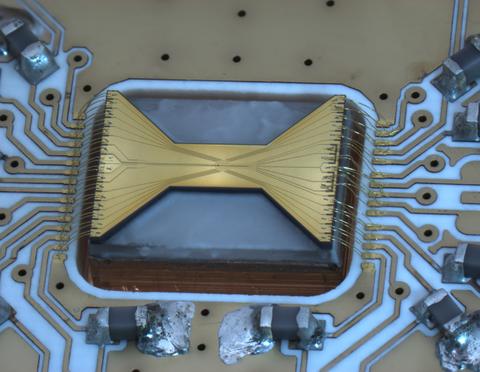
Putting a bow tie on quantum information processing, NIST researchers have a new ion trap with a component that could be key to streamlining the construction of huge quantum computers: a built-in single-photon detector.
Within an ion trap, lasers manipulate the quantum states of the ions (electrically charged atoms). Two states make up the language of quantum computing: either spin up (which represents the qubit state “0”) or spin down (representing the qubit state “1”). Shining a laser on an ion in the spin-down state causes it to emit light, which single-photon detectors can measure so that we can differentiate from the spin-up state.
Conducting major science in a compact size is easier said than done. Combining many ions to make large processors requires keeping tabs on all of those ions at once, conventionally done using large microscope lenses and separate detectors or cameras.
Our bow-tie-shaped trap is about 8 millimeters (mm) long, 5 mm wide at the two ends and 2 mm wide in the middle. NIST researchers used its built-in photon detector to measure the quantum state of a beryllium ion with almost perfect accuracy, getting the right answer more than 99.9% of the time while doing away with the need for imaging lenses and cameras.
Per project lead Daniel Slichter, “Ion trapping is an experimental playground to realize all of the ‘thought experiments’ that the inventors of quantum mechanics contemplated.” That’s where this new detector technology is taking us.
Learn more about the device in this APS Physics journal article and imagine the possibilities.
Follow us on social media for more like this from all across NIST!

